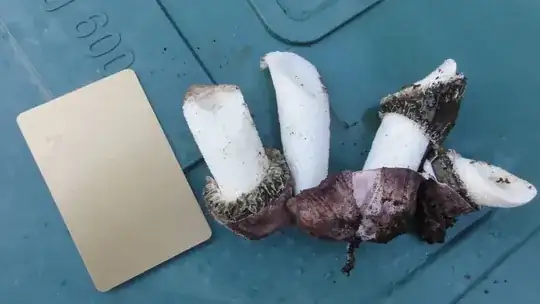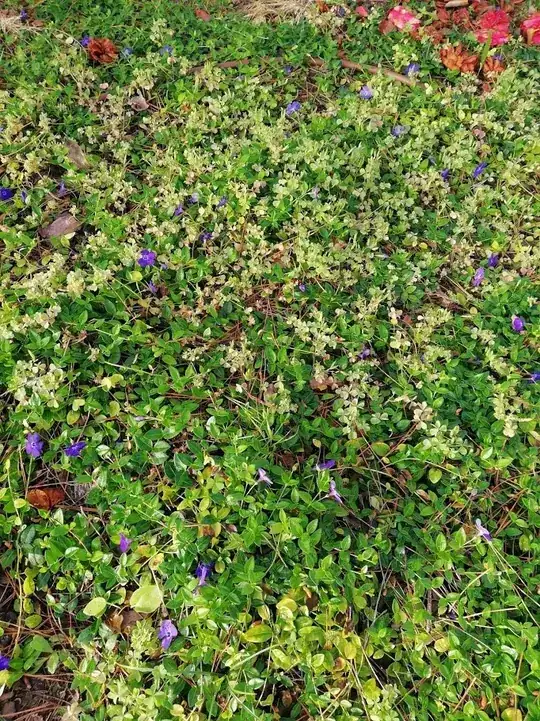
 I have a "plague" of Oxalis corniculata in the middle of Vinca minor. Is there any way to eliminate it chemically or just tearing it off?
I have a "plague" of Oxalis corniculata in the middle of Vinca minor. Is there any way to eliminate it chemically or just tearing it off?
-
Do you have a photo? The situation is strange: Oxalis corniculata prefer dry and sun places. Vinca instead prefers humid and shady places. So possibly cultivation methods could solve the problem (but a photo could help) – Giacomo Catenazzi May 22 '18 at 07:49
-
I can only put the photos next weekend .. and yes, the place is semi shady and is watered drop by drop. – Maria May 22 '18 at 08:40
-
2Vinca is the worst 'weed' bar none that people actually purchase and plant in their yards. Unbelievable the money I've been paid to get that out of the landscape. No way could oxalis ever be a bigger problem than vinca. Awful stuff. Hey, I know, I saw landscapes where every plant was covered in vinca and I had to pull it out, smother with soil and weed seed free mulch...I did not need to use herbicide. But it was costly to the client who learned the hard way. Vinca is a bad bad plant in the landscape. Ok for hanging baskets...but your problem is vinca. Honest. Not Oxalis. – stormy May 22 '18 at 09:40
-
@stormy: is it ivy the worst purchased weed? – Giacomo Catenazzi May 22 '18 at 09:57
-
I have to admit this is a personal problem I have...very ingrained hatred of Vinca. The worst ivy 'weed' is Hedera helix. The worst weed of all is Purple Loosestrife. Weeds can be beautiful and that is one of the reasons they get around the world so well. – stormy May 22 '18 at 20:05
-
One positive of Vinca is that it's nearly immune to juglone, so it will grow under walnut trees. Mine doesn't strangle, though. I didn't know this wasn't par for the course. Guess its genes didn't get that memo (thankfully). – Paul Nardini May 24 '18 at 18:20
3 Answers
In my experience, this plant pops up wherever it can, even though it prefers dry and sunny situations. The problem is the seed pods, they 'fire' their seeds over a fair distance, so a few plants one year translates into an awful lot more the following year. It has creeping stems that can root as they grow, but this plant is technically an annual; the problem is the prolific amount of seed it produces which ensures an ever increasing presence.
In theory, you can just pull off the foliage and flowers, but it's inevitable you will miss some and inevitable more will appear over time, so it's hard to keep up with without digging it out. Any chemical treatments you use will also kill your Vinca. It might be better to simply pull off what you can consistently (especially flowers) and then tackle it properly in Fall by digging out what you can see, even if that means digging up some Vinca and replanting it afterwards. https://www.rhs.org.uk/advice/profile?PID=498
UPDATE: on the subject of Vinca minor, I agree with the comments that this plant is not a good groundcover and behaves like an invasive weed without proper pruning. The way to keep it under control and prevent those bare areas of soil with long, sprawling stems across the empty soil is to cut it back. Every year, when the flowers are over, pull all the stems up in the air and chop them off around 2 inches above ground level. This encourages the plant to put out new growth, meaning thicker, bushier plants, with less likelihood of invasion by other weeds such as the oxalis. This assumes you actually mean V. minor and not the other plant sometimes referred to as 'vinca', Catharansus rosea; the only connection between Vinca and Catharansus is the fact they share the common name of periwinkle and belong to the Apocynaceae family, but their growth habits are quite different.
UPDATE: Vinca minor will do alright where you are, so long as you follow the pruning instructions given above, it's only required once a year, after the main flowering is over. Otherwise, Waldesteinia ternata, Campanula portenschlagiana, Heuchera sanguinea (or any other Heuchera varieties that grow well where you are), possibly Pachysandra terminalis and Catharanthus roseus, though the latter does not like temperatures that fall below 10 deg C and requires partial shade rather than full shade.
- 131,823
- 3
- 72
- 162
-
so I see... planting Vinca as a copper plant was not a good idea. I planted it because it reminded me of my grandfather's garden, with camellias and fir trees. Anyway ...Now with Oxalis gaining ground and being able to invade the rest of the garden I will have to take drastic measures and rip everything off. Which would be a good choice for an acid soil, with shade, mild climate? – Maria May 24 '18 at 13:36
-
When you say mild, where are you in the world - dampness and rainfall makes a difference. And is it total shade, never gets any sun ever? – Bamboo May 24 '18 at 16:39
-
My garden is in Colares, Sintra, Portugal where there is a microclimate. The warm season remains for 3.1 months, from June 22 to September 27, with average daily maximum temperature above 23 ° C. The hottest day of the year is July 29, with an average maximum temperature of 26 ° C and a low average of 18 ° C. The fresh season remains for 3.6 months, from November 22 to March 9, with daily maximum temperature averaging below 17 ° C. The coldest day of the year is January 18, averaging 9 ° C for the minimum temperature and 14 ° C for the maximum. – Maria May 25 '18 at 07:22
-
-
I've updated the answer to include other ideas for ground cover, assuming its very shady in that area. – Bamboo May 25 '18 at 10:07
Vinca is usually excellent ground cover so, hopefully, if given a helping hand, it should eventually swamp the shorter oxalis. If possible you could mulch the area with compost or manure to encourage the vinca to spread (which it does by underground runners). Pull up the oxalis where possible but don't disturb the ground too much as you don't want to damage those runners.
- 3,752
- 8
- 16
-
Holt (1988) found the growth regulator NAA showed promise as a herbicide for O. corniculata control in some ornamentals. https://www.cabi.org/isc/datasheet/38154. Do you now anything about this? – Maria May 23 '18 at 08:48
If it must go, grip it and rip it.
It's a chore, but oxalis doesn't possess nearly the caliber of immortality that some other unwelcome plants do.
On the plus side, according to https://onlinelibrary.wiley.com/doi/pdf/10.1111/j.1445-6664.2005.00167.x there is a significant correlation between above-ground Oxalis and alleopathic activity (measured vs. lettuce, iirc). So, you can potentially just rip the larger ones.
Ime, however, Ox can be banished with a thorough ripping and keeping an eye out for seedlings.
- 2,163
- 7
- 7